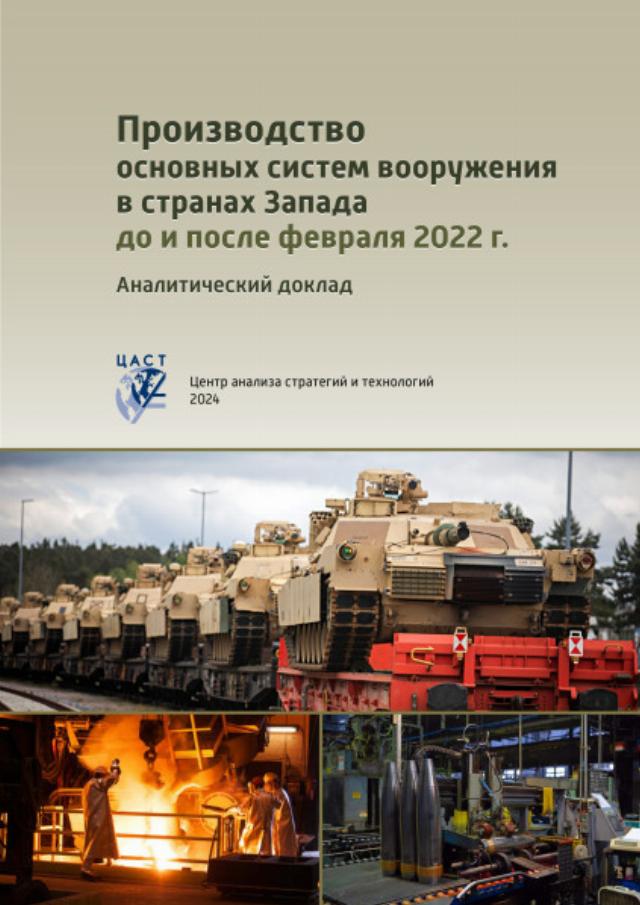The Center for Strategy and Technology Analysis (CFTA) has released a new report that provides an overview of key changes in the defense industries of the United States, Europe, Israel, South Korea and Japan after 2022. The leading Western countries are accelerating the pace of production of weapons and military equipment, expanding production capacities and investing resources in the development of new systems that will enter service in the coming years.

A brief overview
The events of 2022, in particular Russia's special military operation in Ukraine, have clearly demonstrated that the quality of weapons is unable to completely replace the quantity. The high losses of military equipment in a full-scale modern conflict have confirmed the need to increase the pace of production of basic weapons systems. Leading Western states, such as the United States, EU countries, Israel, South Korea and Japan, have accelerated the modernization of defense capabilities and increased the production of military equipment and ammunition. The main reason was not only an increase in demand from their own armed forces, but also the need to support allies, primarily Ukraine.
The conflict has revealed problems in the supply of NATO countries, especially with 155 mm and 152 mm artillery shells. In response, EU and NATO countries have launched defense industry support programs and developed long-term strategies to strengthen their armed forces; major Western manufacturers such as General Dynamics, BAE Systems, Rheinmetall and Hanwha Aerospace have expanded production facilities.
Particular attention is being paid to upgrading existing platforms - such as M1 Abrams tanks in the United States and Merkava tanks in Israel - as part of programs to increase their combat effectiveness and integrate the latest technologies. At the same time, new combat systems are being developed, which should enter service in the early 2030s.
Thus, 2022 was a turning point when Western countries began large-scale investments in expanding their defense capabilities. This is not only a response to the challenges of our time, but also an attempt to create a foundation for the future, preparing for potential conflicts and unpredictable changes in the global security system.
The main provisions
The document is a detailed analysis of the state and trends in the production of key weapons systems in Western countries. It examines the changes that have occurred since 2022 and highlights the main areas of growth and modernization in the defense sectors of the United States, Israel, Europe, South Korea and Japan.
The conflict in Ukraine has led to an increase in the production of artillery shells, anti-tank complexes and air defense systems in NATO countries and their partners. Leading Western states are investing significant resources in the development of new weapons systems that will enter service in the coming years.
The United States retains leadership in the production of armored vehicles and weapons of destruction, focusing on the modernization of existing systems such as M1A2 Abrams tanks and Stryker armored personnel carriers. Large investments are aimed at expanding the production capacity of ammunition and the development of new weapons systems. Key companies - General Dynamics, BAE Systems and Oshkosh Defense - fulfill contracts for the supply of armored vehicles and missile systems, as well as invest in the creation of new tanks and robotic systems.
European countries are actively increasing the production of armored vehicles and equipment, replacing outdated models and making up for losses caused by supplies to Ukraine. Europe's production capabilities are limited by a shortage of materials, high energy prices and dependence on long-term contracts.
To solve these problems, European enterprises are expanding their capacities and investing in plant modernization, but their capabilities are still limited. Many countries are forced to turn to foreign manufacturers, especially from the United States, to fill the shortage of equipment.
Israel relies on its own developments - Merkava tanks and Namer and Eitan armored personnel carriers, but remains dependent on external supplies of hulls, engines and ammunition from the United States.
South Korea is showing rapid growth in the production of weapons, especially 155 mm K9 self-propelled howitzers and K2 tanks, actively increasing exports, including contracts with Poland and other countries.
South Korean products are attractive to potential recipients due to their high quality, relatively low cost and fast order fulfillment.
The Japanese defense industry is developing relatively slowly. Tanks and combat vehicles are produced in small volumes due to the peculiarities of the country's defense policy. There are no companies that deal exclusively with military products - its share in the turnover of the largest manufacturers is less than 20%. Japan still gives priority to the production of weapons and military equipment to protect its own borders, rather than creating an export-oriented defense industrial system.
